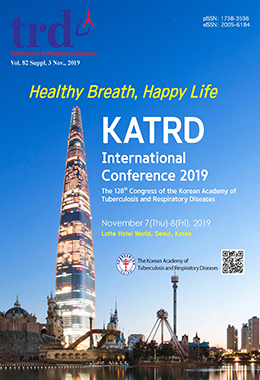Cellular senescence is observed in the lungs of patients with COPD and may contribute to the disease pathogenesis. Growth differentiation factor 11 (GDF11) belongs to the transforming growth factor β superfamily and was recently reported to be a circulating protein that may have rejuvenating effects in mice. We aimed to investigate the amounts of GDF11 in the plasma and the lungs of patients with COPD and elucidate the possible roles of GDF11 in cellular senescence. The plasma levels of GDF11 were investigated in two separate cohorts by western blotting. The localisation and expression of GDF11 in the lungs were investigated by immunohistochemistry and quantitative reverse transcription PCR, respectively. The effects of GDF11 on both cigarette smoke extract (CSE)-induced cellular senescence in vitro and on elastase-induced cellular senescence in vivo were investigated. The levels of plasma GDF11 in the COPD group were decreased compared with the control groups in the two independent cohorts. The levels of plasma GDF11 were significantly positively correlated with pulmonary function data. The mRNA expression of GDF11 in mesenchymal cells from the COPD group was decreased. Chronic exposure to CSE decreased the production of GDF11. Treatment with GDF11 significantly inhibited CSE-induced cellular senescence and upregulation of inflammatory mediators, partly through Smad2/3 signaling in vitro. Daily GDF11 treatment attenuated cellular senescence and airspace enlargement in an elastase-induced mouse model of emphysema. The decrease in GDF11 may be involved in the cellular senescence observed in COPD.
Furthermore, oxidative stress is a major aetiological factor driving COPD. Recently recognised as potent antioxidants, reactive persulfide and polysulfide species are biosynthesised by cystathionine β-synthase and cystathionine γ-lyase. The production of reactive persulfide and polysulfide species in the lungs of patients with COPD remain unknown. So, we aimed to examine the production of reactive persulfides and polysulfides, such as glutathione persulfide (GSSH), cysteine persulfide (CysSSH) and glutathione trisulfide (GSSSH), in lung-resident cells and epithelial lining fluid (ELF) obtained from patients with mild to moderate COPD. Lung tissues, primary lung cells, ELF and sputum were obtained. The amounts of reactive persulfides and polysulfides in the cells and ELF were measured by liquid chromatography-tandem mass spectrometry with β-(4-hydroxyphenyl) ethyl iodoacetamide as a trapping agent for hydroper/polysulfides. The amounts of synthases in the lung tissues, sputum and primary cells were quantified. The amounts of GSSH, CysSSH and GSSSH were decreased in the lung cells and ELF from patients with COPD. The amounts of reactive persulfides and polysulfides in the lung cells had a positive correlation with the degree of airflow limitation. By contrast, the amounts of the synthases were increased in the lung tissues and sputum cells of patients with COPD. We have identified a decrease in reactive persulfide and polysulfide species in the lungs of patients with COPD. These data suggest that the newly detected antioxidants reactive persulfides and polysulfides could be associated with the redox balance in the lungs of patients with COPD.


